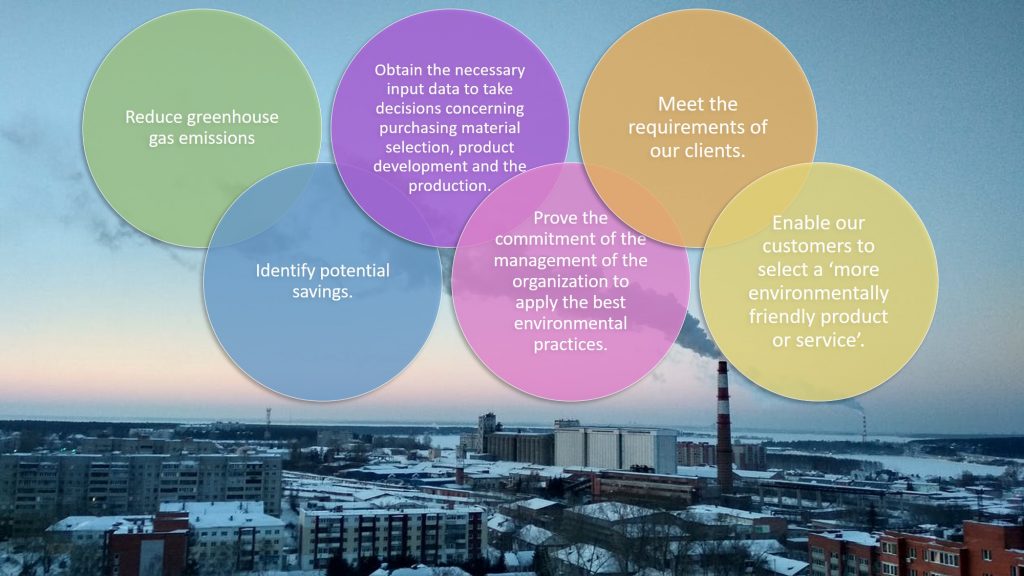Environment and Energy
Carbon footprint is the total quantity of greenhouse gas emissions resulting from activities of individuals, organizations, events, or of production. Greenhouse gas emissions express themselves as molecules of carbon dioxide equivalent (CO2).
We are entering an era of low-carbon society, where we are no longer interested in only lowering greenhouse gas emissions of an individual organization or its manufacture, but in reducing emissions of organizations and production in entire supply chains. Therefore, emissions of whole supply chains are taken into consideration when calculating the carbon footprint of created products.
Fight against climate change that is caused by greenhouse gas emissions is the strategic priority of the European Community. The set strategies and adopted legislation encourage different states and regions to establish their own emission reduction strategies. Furthermore, standards and protocols concerning the carbon footprint of an organization or a product (WRI/WBCSD GHG protocols, ISO 14064, PAS 2050, ISO 14040, PAS 2060, ISO 14067) are developed rapidly. The calculation of carbon footprint tells us the level of environmental efficiency the field of greenhouse gas reduction has achieved.
The mentioned calculation is formed on data of an individual organization or on information of multiple organizations within a supply chain. It is also based on data of energy commonly needed in production, which includes the used materials, processing procedures, transport routes and other information that is already available in various databases.
With the carbon footprint calculation, the necessary information is obtained to:
- Inform the operator about the procedure.
- Gather basic information about an installation.
- Develop a verification plan, which includes risk and strategy analysis.
- Implement the verification plan and prepare a verification report – physical inspection of the device and acquisition of data.
- Prepare a verification report with written assessments.
- Submit the verification report, written impressions and enter the obtained information in the international register.

Calculation of the carbon footprint at an organization level
ISO 14064-1 distinguishes three resource categories in the guidelines for calculating the carbon footprint (GHG protocol)
- Scope 1: direct emissions (generated by activities or equipment the organization owns or controls)
- Scope 2: indirect emissions (all purchased energy consumed by equipment or activity).
- Scope 3: refers to all other indirect broadcasts (transport of employees to and from work, business travel, different services) – it includes everything that is not owned by the organization, yet affects it.
Calculation of the carbon footprint at product level
ISO 14067 and PAS 2050 define the scope of the calculation as the first step.
It is characterised by two different procedures:
- B2C (Business to Consumer): the whole process is taken into consideration, which includes extraction of raw materials, processing, production, retail distribution, consumer use, disposal or recycling.
- B2B (Business to Business): includes raw materials used in production and their processing, to the point at which a new organization takes over the production, and executes product’s packaging, storage and transport to the customer.
When calculating the carbon footprint, a methodological report is prepared with included suggestions of measures that could control and reduce carbon dioxide emissions.
Carbon footprint verification
Carbon footprint verification is performed according to the guidelines of ISO 14064-3. It includes:
- Review and verification of the methodological report for the calculation.
- Review of the determined emission sources.
- An overview of the factors used to calculate the carbon footprint.
Contact
- SIQ Ljubljana
- Mašera – Spasićeva ulica 10
- SI-1000 Ljubljana
- Blanka Kaker
- Tel: +386 (0)51 335 657
- blanka.kaker@siq.si
